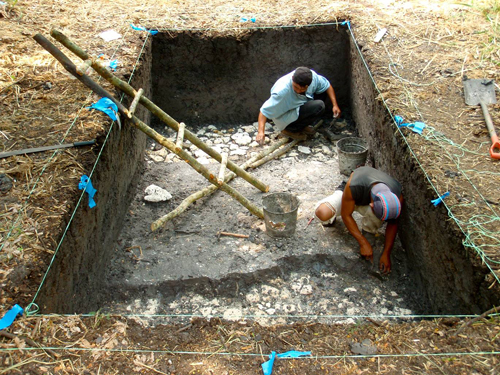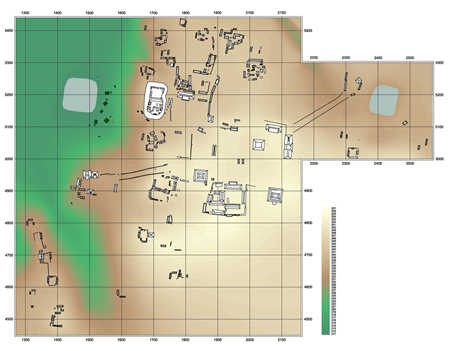 Archaeologists digging at the ancient Maya city of Uxul, Mexico, havelocated an artificial lake the size of a football field. The two metres deep pool its floor a mosaic of ceramic shards was constructed about 1,500 years ago.
Archaeologists digging at the ancient Maya city of Uxul, Mexico, havelocated an artificial lake the size of a football field. The two metres deep pool its floor a mosaic of ceramic shards was constructed about 1,500 years ago.
Uxul is located on the Mexican Yucatn Peninsula, near the Guatamalan border and only twentysix kilometres southwest of Unesco World Heritage Site Calakmul. German and Mexican archaeologists started systematically excavating and mapping its ruins in 2009.
In doing so, we stumbled upon two square water reservoirs, each about 100 metres by 100 metres, says Dr Iken Paap from the University of Bonn.
Massive pools for storing drinking water called ‘aguadas’ are well known from other Maya cities. What makes these newly discovered reservoirs and exceptional find, is that the Uxul peoples seem to have devised an ingenious and previously unkown way to seal their water storage systems.
We’ve carried out atrial excavation, right in the middle of one of the reservoirs, explains Nicolaus Seefeld.We found that the floor, at two metres deep, was almost completely covered with ceramic shards probably pottery fragments. If it is like this throughout the entire aguada, we don’t know yet.

Click the map to see a larger version. The two artificial lakes are marked in blue on this map of Uxul’s ruins. Both measure about 100×100 metres (a football field is about 90 by 120 metres.) – Image copyright Institute for Ancient American Studies, University of Bonn.
If so, the pools are an extraordinary find not at least because of the sheer amount of pottery needed; each of the Uxul aguadascould contain approximately ten Olympic swimming pools.
It is possible future excavations will reveal additional reservoirs. The aguadas needed to store enough water for Uxul’smore than2,000 residents to make it through the three-month dry season.
The German-Mexican excavation team alsofound Uxul’s first intact graves.
From these, and new research on the water provisions and vegetation history, we expect to gain new insights into the inhabitants of this Maya city, says Bonn University’s Dr Nikolai Grube.
All burials found so far were destroyed by grave robbers in search for pottery or jade.
Analysis of the different layers at Uxul shows it was populated throughout the different periods of Maya civilization. We excavated more than three meters deep, revealinga sequence of layersranging from the late Preclassic to the late Classic or Postclassic period,” tells Dr Paap.Inscriptionshave revealedthat around 630 AD, the city of Uxul was annexedto the kingdom of Calakmul.
The name ‘Uxul’, meaning’at the end’, was given to the city by explorers Karl Ruppert and John Denison when they tired and ill after a long expedition through the Yucan Peninsula’s rainforest discovered the ruins in 1934. Not much has changed since the thirties; Uxul is still at the end of the world, far away from modern roads and cities (photographs from the 2010 excavation season seem to confirm this).
To reach the ruins, it takes travelling 120km of jungle paths through the Calakmul Biosphere Reserve, explains Dr Iken.
A thousand years ago, Uxul wasn’t isolated at all. Excellently positioned between the great Mayan cities of El Mirador in the South and Clakmul, the city was trading as far as modern-day southern Guatemalaand the highlands of central Mexico.